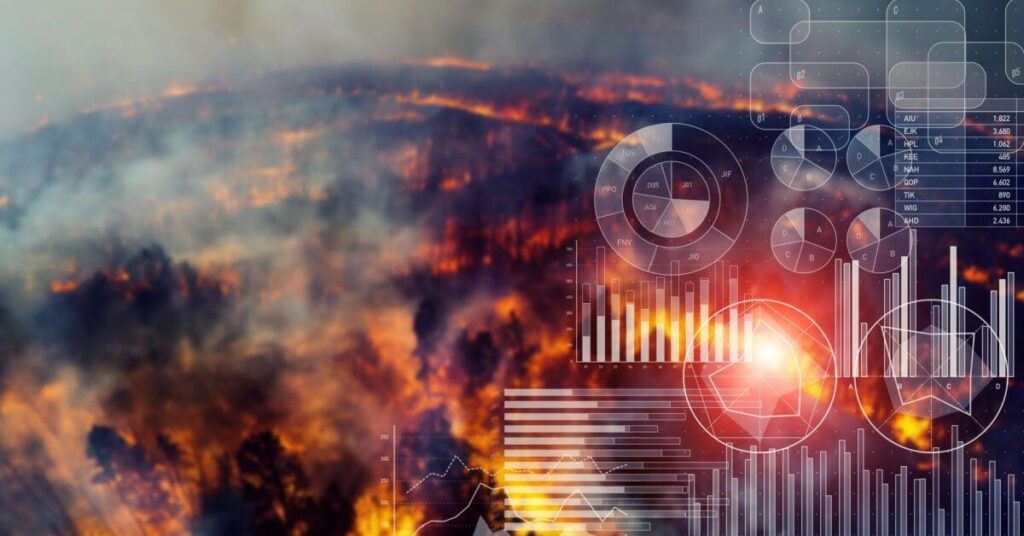As California’s wildfire seasons grow longer and more devastating, the state stands at a critical crossroads. Traditional methods of fighting flames, while valiant, are no longer enough to contain the increasingly fierce infernos that threaten homes, ecosystems, and lives. Enter a new era of innovation-a “wildfire moonshot” that harnesses cutting-edge technology, from advanced satellite monitoring and artificial intelligence to autonomous drones and fire-resistant materials. This bold fusion of science and strategy promises to transform the battle against blazing wildfires, offering hope that technology can finally get ahead of the advancing flames. In this article, we explore the technological breakthroughs poised to reshape fire prevention and response across California’s volatile landscape.
California’s Tech-Driven Strategy to Outpace Wildfires
In the face of increasingly ferocious wildfires, California is embracing an innovative fusion of cutting-edge technology and strategic planning to stay one step ahead. Advanced aerial drones equipped with thermal imaging cameras scout vast terrains, providing real-time data that enables emergency teams to pinpoint hotspots before they explode into uncontrollable infernos. Paired with AI-driven predictive models, these insights transform raw data into actionable intelligence, allowing officials to allocate resources efficiently and protect vulnerable communities at a moment’s notice. This technological symphony not only accelerates detection but also refines evacuation tactics, minimizing risks to both residents and first responders.
Key technology pillars reshaping wildfire management include:
- Satellite analytics tracking vegetation dryness and wind patterns
- Machine learning algorithms forecasting fire spread trajectories
- IoT sensors embedded in forests monitoring humidity and temperature in real time
- Next-gen communication networks ensuring uninterrupted data flow during emergencies
| Technology | Main Benefit | Implementation |
|---|---|---|
| Drones with Thermal Cameras | Early fire detection | Deployed statewide |
| AI Modeling | Fire spread forecasting | Emergency centers |
| IoT Environmental Sensors | Real-time data collection | Forests & parks |
| 5G Networks | Reliable communication | Rural & urban zones |
Harnessing AI and Satellite Data for Early Flame Detection
Imagine a network where artificial intelligence continually scans vast landscapes, analyzing thousands of images from orbiting satellites in real time. This evolving synergy between AI and satellite data is revolutionizing wildfire detection by identifying the faintest traces of smoke or heat before flames can spread uncontrollably. Machine learning models trained on historical fire patterns empower systems to discern between harmless wildfires and those with potential for rapid escalation, enabling emergency responders to act with unprecedented speed and precision.
Key advantages of this cutting-edge approach include:
- Continuous 24/7 monitoring with near-instant alerts
- Broad coverage encompassing remote and inaccessible terrain
- Data-driven prioritization for resource deployment
- Decreased reliance on human observation and traditional patrols
| Technology | Benefit | Response Time |
|---|---|---|
| AI-Powered Image Analysis | Detects subtle smoke patterns | Seconds |
| Satellite Infrared Sensors | Identifies heat anomalies day & night | Minutes |
| Automated Alert Systems | Notifies firefighting units instantly | Immediate |
Innovative Solutions and Policy Shifts to Protect Vulnerable Communities
California is spearheading a transformative approach by integrating cutting-edge technologies with forward-thinking policies to safeguard its most vulnerable residents from the escalating threat of wildfires. Deploying AI-powered predictive analytics, state agencies can now anticipate fire trajectories and alert communities well before flames arrive. Coupled with enhanced sensor networks and drone surveillance, this real-time data collection enables rapid evacuations and targeted resource deployment. Moreover, public-private partnerships are fostering innovation ecosystems where startups and research institutions collaborate on wildfire-resistant building materials and community-based early warning systems.
Policy shifts emphasize equitable resource distribution to ensure marginalized neighborhoods receive priority in prevention efforts and recovery programs. Below is a snapshot of key components driving this inclusive strategy:
- Expanded funding for low-income households to retrofit homes with fire-resistant design
- Community engagement initiatives to increase wildfire awareness and preparedness
- Streamlined emergency communication tailored to multilingual and disabled populations
- Prioritizing aid and rebuilding efforts for indigenous and rural communities
| Innovative Tool | Purpose | Community Benefit |
|---|---|---|
| Predictive AI Models | Forecast fire spread | Early warnings, saves lives |
| Smart Sensor Networks | Monitor environmental conditions | Improves firefighting response |
| Concluding Remarks
As California continues to grapple with the relentless advance of wildfires, the fusion of cutting-edge technology and bold innovation offers a beacon of hope. From satellite surveillance to AI-driven predictive models, these tools promise to transform how we detect, manage, and ultimately outsmart the flames. While the challenges remain daunting, this wildfire moonshot reflects not only a technological leap but a steadfast commitment to protecting communities and landscapes. In this evolving battle against nature’s fiercest blazes, the future may well be written by the machines designed to keep the fires at bay. |
